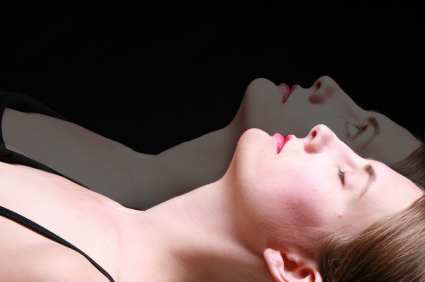It seems that one the favorite things for HMD users is to look at themselves - virtually. There are several ways to do this.
One way is to install video cameras that capture the user's image. This could be from the front to reproduce the feeling of using a mirror, but it is often more interesting to capture the user from the top or back, this providing an 'out of body' experience. Experiments along these lines have been reported several years ago by the Karolinska Institute.
Another way is to perform 3D laser scanning of self, such as using the services of our friends at ShapeShot. This allows creating a virtual 3D representation of a person and then incorporating that representation in a virtual scene. The effect of browsing a virtual museum and then seeing your head rotate on a pedestal like a Greek head sculpture is quite amazing.
A third way is to use motion capture technologies and then create a moving avatar that mimics your movements. The avatar does not have to be a true representation. It could have a over sized head, or a severed leg, or have limited range of motion. This can be used to illustrate the impact of several disabilities, or sometimes to help with a treatment or physical therapy plan.
In a recent trade show, we installed an iMove spherical video system on top of a post and allowed users to explore the trade show from high above by wearing an HMD with an integrated head tracker and having that head tracker control the direction of the camera. Interestingly, a favorite target was to look down, which caused the camera on the post to look down, thus providing a view of self.
Why is this fascination with viewing self? How can this be used, in 3D, to provide new experiences such as a virtual shopper that lets you see how you would look in a new piece of clothing, or help explore what it would feel like to be taller, or shorter, or otherwise different?

No comments:
Post a Comment